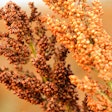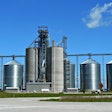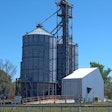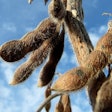‘Ug99’ is the term used for a group of highly virulent races of stem rust that emerged in central Africa starting in 1999. Since then, the Ug99 group has spread to South Africa and north to Ethiopia, Yemen, and Iran. Experts expect that it will continue to spread and will eventually reach North America. The threat to the global wheat crop is high because Ug99 is able to defeat almost all of the older resistance genes that have been used to protect wheat from wheat stem rust for the last fifty years.
几年前,全球努力推出find new sources of resistance to Ug99. Some of that work has been done here in Manhattan, KS, as a cooperative project between USDA-ARS and the Wheat Genetic and Genomic Resources Center (WGGRC) at Kansas State University. In some cases, genes have been found in wheat close relatives and the genes were easily transferred to adapted bread wheat lines. In other cases, the resistance genes were derived from distant wheat relatives and carried along some extra genetic baggage that detracts from yield or quality. In response, wheat cytogeneticists have worked to remove the excess baggage by shortening the chromosomal segments that carry the alien genes. Cytogenetic researchers from Australia, USDA-ARS in Fargo, North Dakota and Kansas, have all contributed valuable new Ug99-resistant lines. We now have a set of genes that provide good resistance to Ug99.
One thing we have learned through hard experience is that single resistance genes don’t last long after you release them because the pathogen can easily mutate and overcome one gene at a time. So our strategy is to release hard winter wheat cultivars that carry more than one gene. Two may be enough, but three genes would probably be much more durable. Hard Winter Wheat Genetics Research Unit (HWWGRU) researchers are working cooperatively with regional wheat breeders to stack two or more new stem rust resistance genes into elite cultivars. These gene stacks are often referred to as pyramids. In the past, it was very difficult to pyramid three genes together in the same cultivar because the genes masked each other. One gene looked almost the same as three as far as we could tell by eye. Luckily, the new resistance genes can all be tested in our genotyping laboratory using molecular markers. We can now identify which lines carry the desired gene pyramid and select only the positive lines for further testing.
Our favorite genes for pyramiding areSr22from the wheat relativeTriticum monococcum,Sr26fromThinopyrum ponticum, andSr35fromT. monococcum. All three genes are effective against Ug99 and are thought to have little or no deleterious effects on yield or quality. In addition, we are planning to includeLr34in the pyramid.Lr34is a leaf rust resistance slow-rusting gene that has been durable for more than fifty years. Recently it has been shown to be effective against stem rust, too. The resulting pyramid should be nearly immune to the Ug99 group and should last many years. In the mean time, we will continue to add to our arsenal of new resistance genes.
For more information, contact Dr. Robert Bowden (785) 532-2368,[email protected].




















